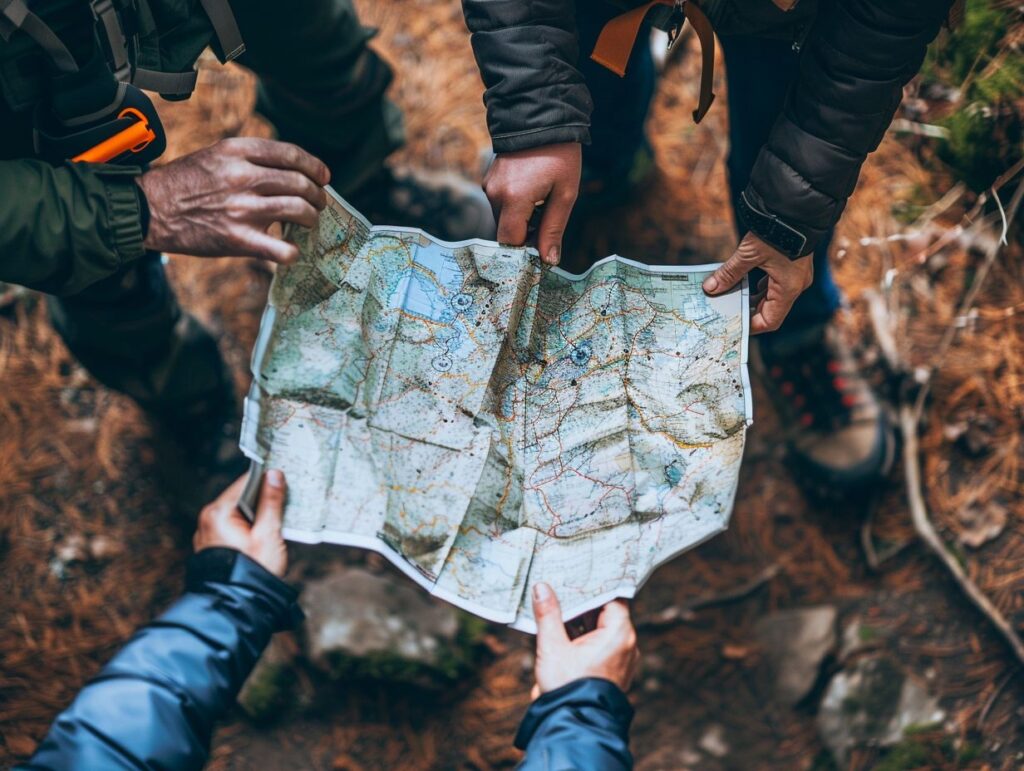Looking for a fun and adventurous way to spend time with your friends? Planning a hiking trip might be just what you need!
Hiking provides an opportunity to explore the great outdoors and offers a range of benefits when done with a group of friends. From safety in numbers to motivation and support, there are plenty of reasons to hit the trails with your pals.
In this article, we’ll discuss why you should plan a hiking trip with friends, how to choose the right hiking trail, what to pack for your adventure, and how to prepare for the hike ahead.
Lace up your hiking boots and get ready for an unforgettable outdoor experience with your friends!
Key Takeaways:
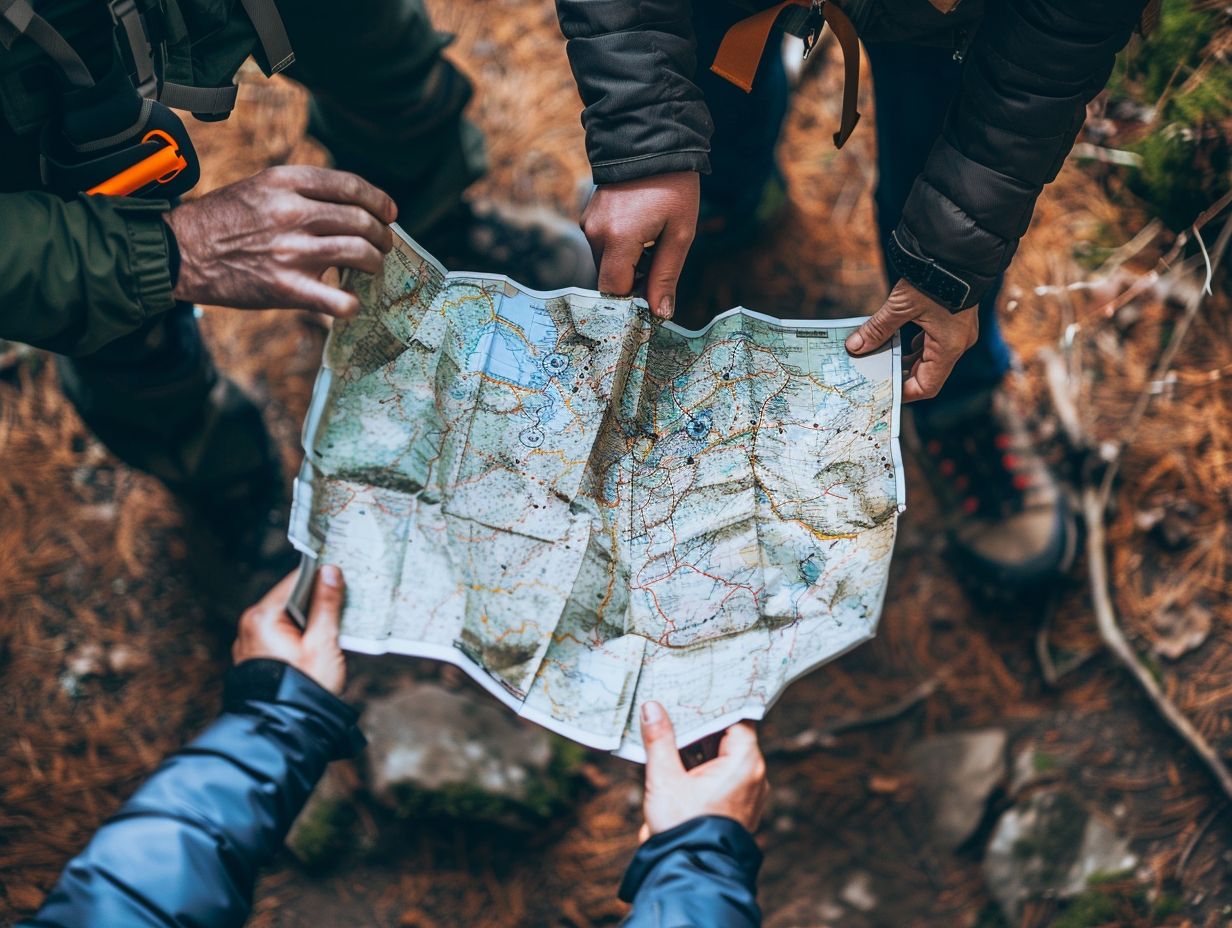
- Hiking with friends provides safety in numbers, motivation and shared experiences.
- Choose a hiking trail that matches the group’s skill level and fitness, while considering distance, elevation gain, and permits.
- Pack essential gear, appropriate clothing and footwear, food and water, and navigation and communication tools for a successful hiking trip.
Why Plan a Hiking Trip with Friends?
Embarking on a hiking trip with friends can be a highly gratifying experience, providing an opportunity to collectively explore nature, distribute responsibilities, and forge enduring memories along the trail.
Engaging in a hiking expedition with friends not only allows individuals to bond over the trials of the trail but also cultivates a profound sense of camaraderie as they traverse the natural landscapes.
The delegation of shared responsibilities, such as route planning, meal preparation, and camp setup, nurtures a cooperative ethos and reinforces the interpersonal connections within the group.
It is imperative to take into account the preferences and fitness levels of each participant, ensuring inclusivity and an enjoyable journey for all involved.
What Are the Benefits of Hiking with Friends?
Engaging in hiking activities with companions presents a multitude of advantages, ranging from heightened safety measures and reciprocal assistance to the gratification of communal experiences and the encouragement to collectively surmount obstacles.
1. Safety in Numbers
One of the primary advantages of engaging in group hiking activities is the heightened safety provided by the collective presence, particularly when venturing into remote locations such as the Great Smoky National Park. When participating in group hikes, a sense of mutual aid and shared accountability emerges, which can be pivotal in the event of emergencies.
Every member of the group can contribute their individual expertise and acumen to surmount any obstacles or challenges that may arise along the trail. In a group dynamic, monitoring each other’s whereabouts is facilitated, thereby diminishing the likelihood of individuals becoming lost or separated.
Establishing communication protocols within the group and ensuring that all participants are equipped with essentials like a first aid kit, an ample water supply, and navigation tools serves to significantly elevate the overall safety standards.
2. Motivation and Support
Having a companion while hiking can offer considerable motivation and support, aiding individuals in overcoming challenging sections of the trail and enriching their overall hiking experience.
A supportive hiking partner plays a crucial role in maintaining morale when fatigue sets in or adverse weather conditions arise. For example, partners can provide words of encouragement during moments of exhaustion or assist in carrying gear to alleviate the physical strain. Sharing the triumph of reaching a summit or successfully navigating a difficult path can enhance the journey’s satisfaction.
Moreover, their presence can provide a sense of safety and camaraderie, particularly in remote or unfamiliar environments.
3. Shared Experience
Engaging in hiking activities with companions cultivates distinctive shared experiences that facilitate the development of deeper connections and lead to treasured memories of collectively navigating through trails.
Taking group photographs in picturesque locations enables all participants to capture a moment in time, immortalising the feelings of accomplishment and camaraderie experienced during the hike.
Gathering around a campfire following an extensive day of trekking establishes an ideal environment for heartfelt discussions and shared laughter, fortifying relationships and fostering unforgettable moments that will be reminisced about for years to come.
How to Choose the Right Hiking Trail?
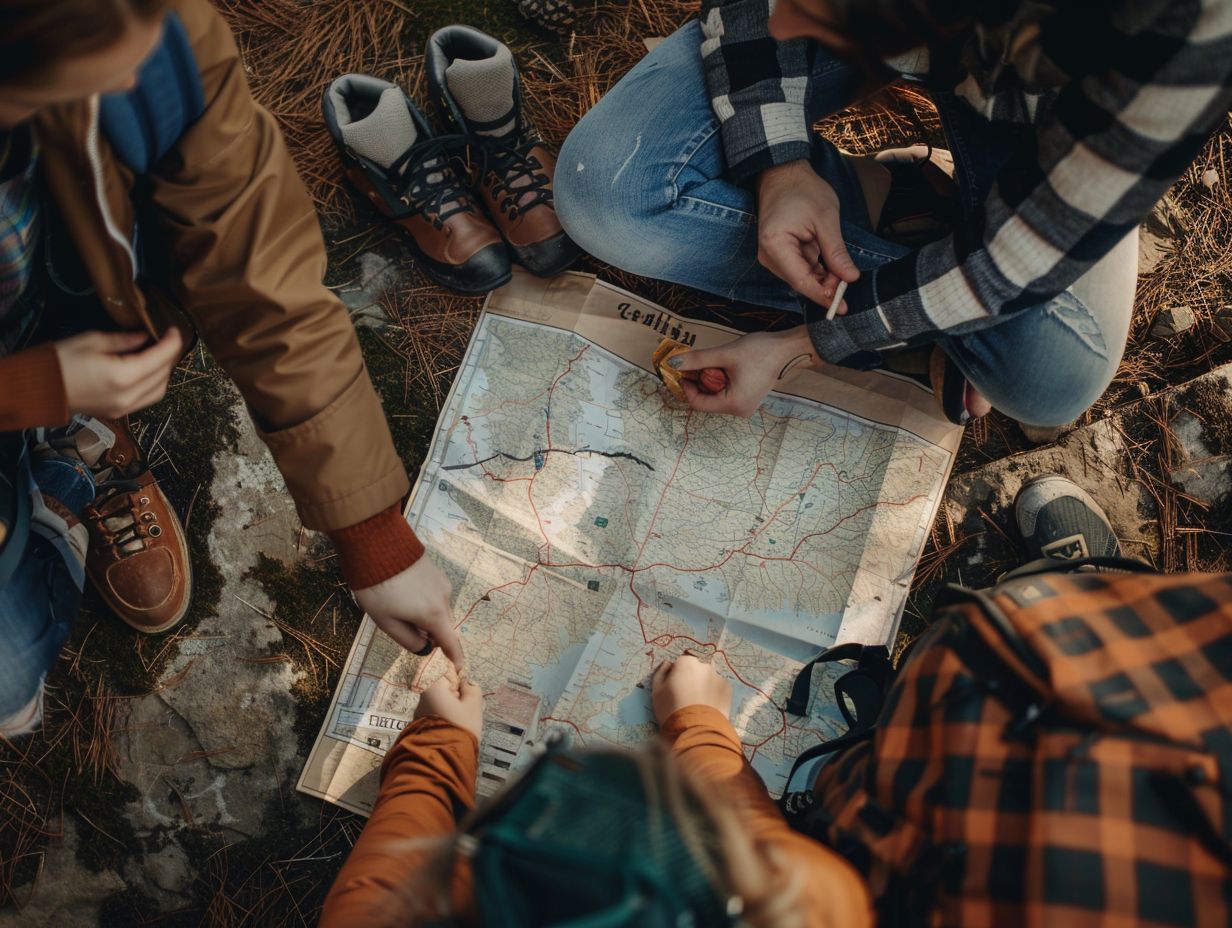
When selecting a suitable hiking trail, it is vital to consider a variety of factors, such as personal skill level, physical fitness, the trail’s distance, and ascent. This consideration ensures a safe and enjoyable hiking experience for all participants.
1. Consider Skill Level and Fitness
When choosing a hiking trail, it is essential to take into account the skill level and physical condition of all participants to ensure that the hike is both manageable and enjoyable for everyone.
For novice hikers, it is recommended to start with shorter, less demanding trails that feature gentle slopes and clearly marked paths. These trails are particularly suitable for individuals who are new to hiking and are seeking to enhance their stamina gradually.
In contrast, experienced hikers may seek out more demanding paths characterized by steep slopes, rugged terrain, and greater distances. It is crucial to align the trail’s level of difficulty with the capabilities of the group to mitigate potential hazards and ensure a rewarding outdoor excursion.
2. Look at Distance and Elevation Gain
It is imperative to assess the distance and elevation gain of a hiking trail to align it with the group’s physical endurance, thereby ensuring a comfortable and pleasant hiking experience.
Commence the evaluation process by diving into the trail’s length and elevation profile, as these aspects significantly influence the degree of challenge the trail poses. Seek out trail reviews or guidebooks that offer comprehensive insights into the terrain and any particularly arduous sections.
When selecting a trail, take into consideration the fitness levels of all participants and opt for one that suits the abilities of the least experienced hiker. It is essential to bear in mind that maintaining a suitable pace is crucial in order to prevent exhaustion, hence planning for regular breaks to rest, hydrate, and appreciate the surrounding scenery is highly recommended.
3. Check for Permits and Regulations
Before commencing a hiking expedition, it is imperative to ascertain any requisite permits and adhere to pertinent regulations for accessing designated trails and areas. This practice is not only critical for ensuring a lawful and secure exploration but also assists in the conservation of the natural environment and wildlife.
Prominent trails such as the Pacific Crest Trail, Half Dome in Yosemite National Park, and The Wave in Arizona’s Vermilion Cliffs National Monument exemplify locations where permits are imperative due to their high demand and the necessity to efficiently manage visitor influx.
To secure permits, hikers typically need to visit the official websites of the respective parks or forests, where comprehensive instructions on application procedures, associated fees, and the specific guidelines for each trail can be found.
What to Pack for a Hiking Trip?
Preparing for a hiking expedition entails meticulous planning for essential equipment, appropriate clothing, an abundant supply of food and water, as well as reliable navigation and communication devices to ensure a safe and enjoyable journey.
1. Essential Gear
The equipment essential for a hiking excursion encompasses a reliable backpacking outfit, navigation tools like the Garmin inReach Mini, and other essential items to ensure safety and convenience during the expedition.
A top-tier rucksack stands as a hiker’s most valuable asset, exemplified by choices like the Osprey Atmos AG 65 or the Gregory Baltoro 65, meticulously crafted to evenly distribute weight and provide ample storage for essentials.
Sturdy walking boots like the Salomon Quest 4D 3 GTX provide support and protection on rough terrain, while moisture-wicking socks from reputable brands such as Darn Tough or Smartwool maintain dryness and prevent blisters.
A versatile tool like the Leatherman Signal proves invaluable for equipment maintenance, and a reliable torch such as the Petzl Actik Core ensures visibility in low lighting conditions.
2. Clothing and Footwear
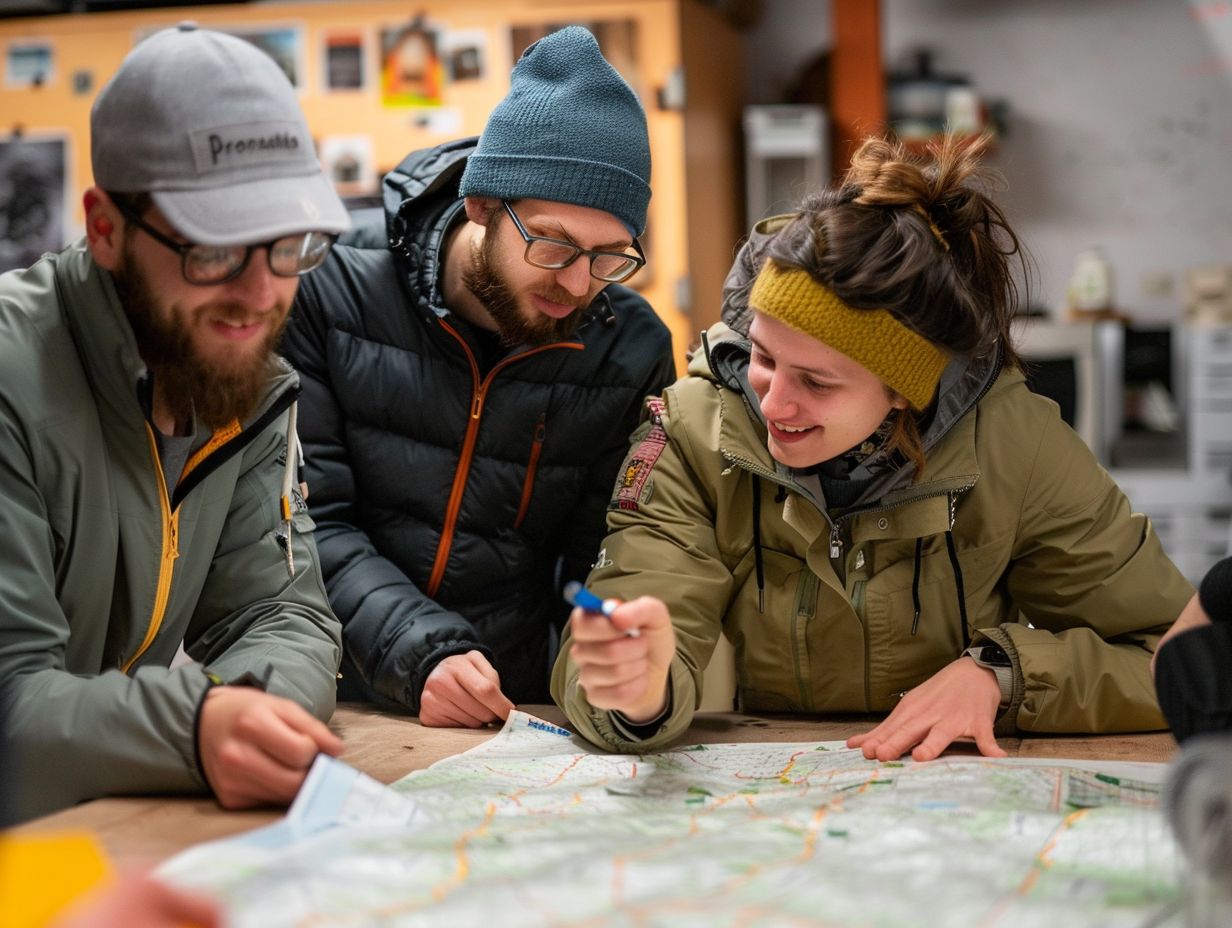
Careful selection of appropriate clothing and footwear is crucial to ensure a comfortable and secure hiking experience, taking into account varying weather conditions and the need for specialised equipment.
During the preparation phase of a hiking excursion, it is essential to choose attire made from moisture-wicking materials that can effectively maintain dryness and reduce chafing. Reputable brands such as Patagonia, Arc’teryx, and The North Face offer durable yet lightweight clothing options suitable for hiking activities.
In colder climates, the practice of layering using merino wool or thermal fabrics can play a significant role in regulating body temperature.
In terms of footwear, investing in high-quality hiking boots that provide adequate ankle support, such as those offered by Salomon or Merrell, is essential for maintaining stability on uneven terrains.
Additionally, selecting socks composed of synthetic blends or wool can help in blister prevention and provide additional cushioning for increased comfort during hiking expeditions.
3. Food and Water
It is imperative to meticulously plan food and water supplies for any hiking expedition, particularly for multiday treks where maintaining proper nourishment and hydration becomes paramount.
When strategizing the meal provisions for a hiking adventure, it is advisable to select lightweight and non-perishable food items, such as nuts, energy bars, jerky, dried fruits, and instant soups, to minimise the load in the backpack.
Furthermore, it is prudent to consider the nutritional content and calorie density of the food choices to ensure a sustained energy level throughout the expedition.
Moreover, the acquisition of a compact water purification system or water filter is essential to guarantee a safe and uncontaminated water source while traversing the trail.
Implementation of hydration techniques, such as utilising a hydration bladder or a portable water bottle with regular intervals for sipping, can be instrumental in preventing dehydration during physically demanding hikes.
4. Navigation and Communication Tools
It is imperative to utilise reliable navigation and communication tools, such as Google Maps and other GPS devices, when embarking on a hike. These tools play a crucial role in ensuring that individuals remain on the correct path and have the means to communicate effectively in case of emergencies.
Along with offering real-time guidance on trails and surroundings, these tools provide essential information regarding terrain, elevation, and potential hazards. Devices like the Garmin InReach Explorer+ and smartphone apps like Gaia GPS enable hikers to share their precise location with friends or emergency services, facilitating a prompt response in times of need.
The availability of a dependable method for navigation and communication can effectively prevent hikers from deviating off course, becoming disorientated, or encountering challenges in communication when in remote and unfamiliar terrains.
How to Prepare for the Hike?
Preparing for a hike involves engaging in physical conditioning to enhance fitness levels, developing a comprehensive itinerary and route plan, and allocating responsibilities fairly within the group to enable a smooth and enjoyable expedition.
1. Train and Get in Shape
Proper training and physical conditioning are vital components in the preparation for a hiking expedition, ensuring that one possesses the requisite fitness level and stamina to navigate the trail comfortably.
One highly effective approach to training for hiking involves integrating incline walking or hiking into one’s fitness regime. This method serves to fortify the leg muscles, particularly the quadriceps, hamstrings, and calves, which play an integral role in ascending steep inclines. Additionally, exercises like lunges, squats, and step-ups can effectively target and strengthen these muscle groups.
Developing core strength is equally essential for maintaining balance and stability on uneven terrain. Therefore, incorporating exercises such as planks, Russian twists, and stability ball workouts can prove advantageous. It is crucial to gradually elevate the intensity of the training sessions while incorporating rest days to prevent the risk of overexertion.
2. Plan a Schedule and Route
Creating a comprehensive itinerary and route is essential for a successful hiking expedition. This approach enables the hiker to establish daily objectives, calculate the distance to be covered per day, and ensure a well-structured adventure.
During the preparation phase of the hiking schedule, it is imperative to carefully assess the terrain and elevation variations in each segment to accurately predict the duration required for each day’s hike. Leveraging topographical maps and hiking applications can aid in identifying potential camping locations, water sources, and noteworthy landmarks along the chosen route.
It is advisable to segment the hike into manageable daily distances based on individual fitness levels and the trail’s level of difficulty, allowing for periodic rest breaks and accounting for unexpected delays.
Opting for appropriate destinations for each day, whether it involves reaching a scenic mountain summit or settling at a tranquil lakeside campsite, can enrich the overall hiking experience and maintain motivation throughout the expedition.
3. Share Responsibilities and Assign Tasks
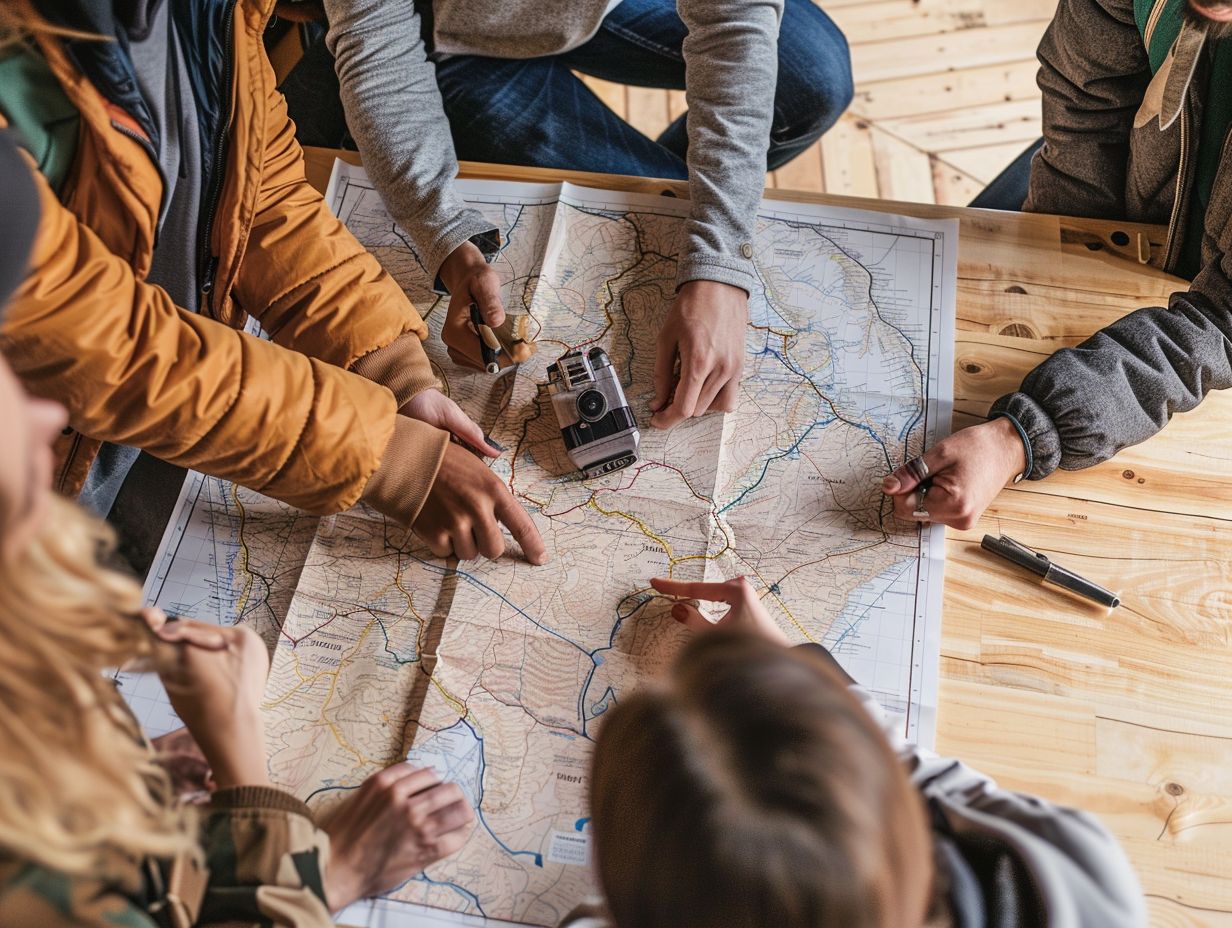
Collaborating with fellow hikers to distribute responsibilities and allocate tasks ensures that each member actively contributes to the hiking expedition and effectively manages all necessary equipment and duties. This approach not only alleviates the individual burden on each hiker but also cultivates a spirit of teamwork and camaraderie within the group.
When delegating tasks, it is important to take into account the unique strengths and preferences of each participant.
For instance, individuals with a passion for cooking can oversee meal planning and preparation, whereas those with expertise in navigation can lead the way in charting the course. Additionally, equipping the group with shared items such as a first aid kit or a portable water filter helps in evenly distributing the load.
Implementing a rotation system for responsibilities during the trek promotes engagement among all members and helps prevent exhaustion.
Frequently Asked Questions
What are some factors to consider when planning a hiking trip with friends?
Some factors to consider when planning a hiking trip with friends include the difficulty level of the hike, the length of the trail, the location and accessibility of the trail, the weather conditions, the availability of amenities and facilities along the trail, and the experience and fitness levels of your friends.
How should I involve my friends in the planning process?
It is important to involve your friends in the planning process to ensure that everyone’s preferences and expectations are taken into consideration. You can create a group chat or email chain to discuss and decide on the details of the trip, such as the date, location, and itinerary.
What are some essential items to pack for a hiking trip with friends?
Some essential items to pack for a hiking trip with friends include proper hiking gear and clothing, plenty of water and snacks, a map or GPS device, a first aid kit, sunscreen and insect repellent, and a fully charged phone for emergencies.
How can I ensure the safety of my friends during the hike?
To ensure the safety of your friends during the hike, make sure to research the trail beforehand and be prepared for any potential hazards. It is also important to set a realistic pace and take regular breaks, stay together as a group, and have a communication plan in case of separation or emergency.
What are some fun activities to do on a hiking trip with friends?
Aside from hiking, there are many fun activities you can do on a hiking trip with friends. You can plan a picnic or cookout at a scenic spot along the trail, play games, have a photo competition, tell stories around a campfire, or stargaze at night.
How can I be a responsible and sustainable hiker with my friends?
To be a responsible and sustainable hiker with your friends, make sure to follow Leave No Trace principles, stay on designated trails, respect wildlife and their habitats, properly dispose of waste, and leave the trail better than you found it by picking up any litter.

